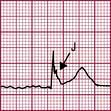Chapter 18 Environmental medicine
Disease and the environment
 Nutrition, poverty and affluence
Nutrition, poverty and affluence
 Purity of water sources, sanitation and atmospheric pollution
Purity of water sources, sanitation and atmospheric pollution
 Environmental disasters and accidents
Environmental disasters and accidents
 Background ionizing radiation and man-made radiation exposure, deliberate or accidental
Background ionizing radiation and man-made radiation exposure, deliberate or accidental
 Political forces determining levels of healthcare, preventative strategies and effects of war on civilian populations.
Political forces determining levels of healthcare, preventative strategies and effects of war on civilian populations.
Heat
Cold
 Frostbite: the local cold injury that follows freezing of tissue
Frostbite: the local cold injury that follows freezing of tissue
 Non-freezing cold injury: the damage – usually to feet – following prolonged exposure to TEnv between 0 and 5°C, usually in damp conditions.
Non-freezing cold injury: the damage – usually to feet – following prolonged exposure to TEnv between 0 and 5°C, usually in damp conditions.
Hypothermia
Hypothermia occurs in many settings.
Severe hypothermia
In severe hypothermia, people look dead. Always exclude hypothermia before diagnosing brainstem death (see p. 897). Warm gradually, aiming at a 1°C/hour increase in TCore. Direct mild surface heat from an electric blanket can be helpful. Treat any underlying condition promptly, e.g. sepsis. Monitor all vital functions. Correct dysrhythmias. Check for sedative drugs.



















